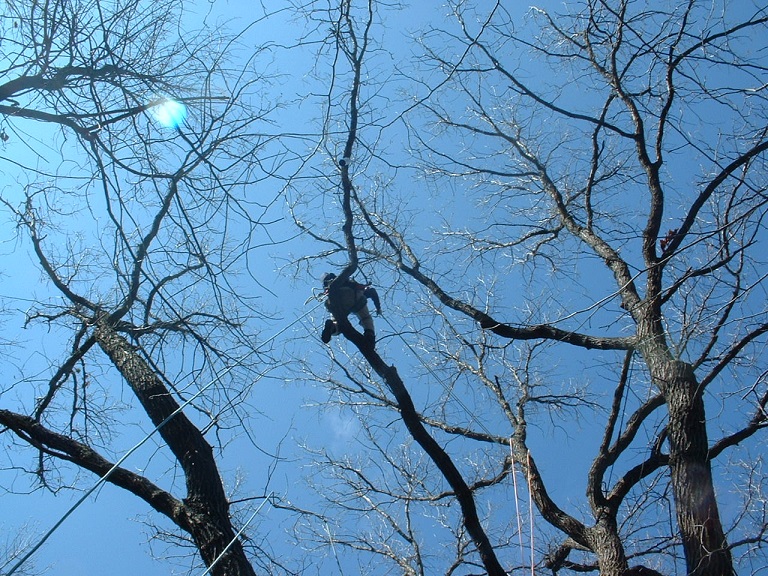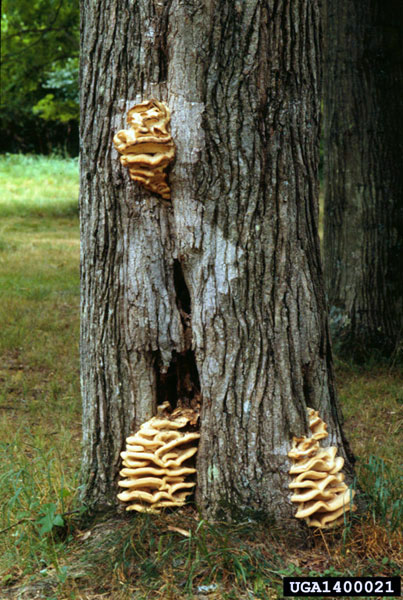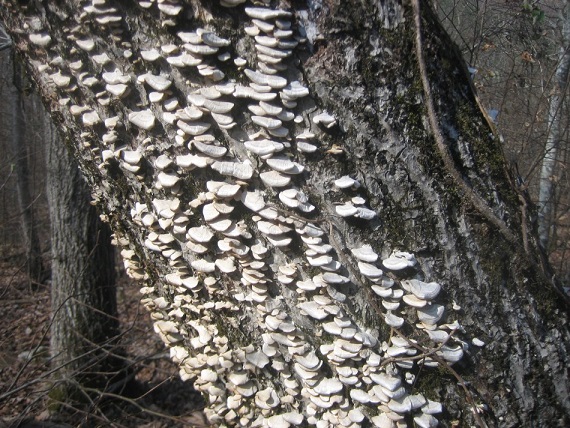
“We are not at our best perched at the summit; we are climbers, at our best when the way is steep.”
– John W. Gardner
Early morning. Before the saws and chipper break the silence. While you can still hear the birds calling to each other. You’re itching to get started. All anticipation and nerves. Maybe you had too much coffee. You just want to get up there. Do something meaningful with your day.
Patience.
When the canopy is so accessible and inviting, how could you be content to stay on the ground? Trees call to you. Maybe it’s a primate thing. You were made to climb and swing and hang, that’s what feels natural. It’s in your blood. It’s who you are. It’s who we all are. Most people just don’t know it. But you do. You feel the call.
Patience.
Climbing makes you feel like a kid. It was something you used to do for fun. Not because someone said you had to. Not because a teacher said you should. Not for your parents. Just for you. And now you get to do that for a living? How cool is that?
Patience.
Today, rather than talking about climbing, I wanted to take a look at some of the pre-game rituals of production tree work. Because the climbing, cutting, and rigging is only one aspect of tree work. There is a lot more that goes into a successful tree job, before the job even begins. So let’s just slow down a bit and explore some of those things before we get climbing…
Person in Charge
On every job site there must be a qualified arborist in charge of operations. The ANSI Z133 – American National Standards for Arboricultural Operations, Safety Requirements, defines a “qualified arborist” as:
- “an individual who, by possession of a recognized degree, certification, or professional standing, or through related training and on-the-job experience, is familiar with the equipment and hazards involved in arboricultural operations and who has demonstrated ability in the performance of the special techniques involved.”
Leadership
Just because someone has been deemed to be “in charge”, do not assume this makes them a good leader. Leadership is a huge topic of which entire books can be found, but in my mind, leadership comes down to communication and ownership.
- Communication
An effective leader communicates well. That’s the bottom line. How can an employee be held accountable for anything, (anything!), if they haven’t been trained properly and effectively on exactly what their responsibilities are, how to complete all of the tasks assigned to them, and how those tasks fit into the framework of what everyone else on the jobsite is doing? Do not assume anything of any employee, especially the new guy! - Ownership
If you are in charge and something goes wrong, it’s your fault. End of story. That’s ownership. You may not like that, and it may not seem fair, but guess what? That’s reality.
Safety Mentality
Although the person in charge is ultimately accountable for the job, the entire crew shares the responsibility for safety and they should help to assess the jobsite. All crew members are responsible for their own safety as well as the safety of others. On a crew, everyone looks out for everyone else. However, never assume that someone else is more interested in your own personal safety than you are. This may sound contradictory at first, but it will probably make more sense the longer you work in this trade.
Roles and Responsibilities
In addition to recognizing that there is one person on-site who is ultimately responsible for the job, it is critical that everyone else knows their roles and responsibilities. When people operate in groups, clearly defined roles can make the difference between success and failure. Tasks that are just taken care of “by everyone” are the ones that most often cause problems. Roles and responsibilities cannot be fuzzy. Everyone loves to play the blame game and pass the buck, but the true professional takes responsibility because he knows what is required of him. Again, this concept of clearly defined roles derives from strong leadership and communication.
Emergency Preparedness
A critical part of personal responsibility for all arborists is that they are ready and prepared to respond to an emergency situation. Basic preparation includes:
- Know the location where you are working, including street address and basic directions.
– this information would be crucial in an emergency, e.g. calling 911 - All tree care workers must know location of first aid kits and fire extinguishers.
- Training in first aid and CPR is invaluable for all workers.
- All workers should have basic knowledge of aerial rescue scenarios including bucket truck and climber rescues (High Angle Rescue).
- All workers must be proficient with ground controls for bucket trucks.
– this would be crucial in an aerial rescue situation where bucket operator was incapacitated or bucket controls were not functioning properly - Bucket truck operators must always carry an emergency rope that will reach the ground, and be experienced in bailing out of a bucket at height
Site Inspection and Jobsite Staging
Before commencing work, the jobsite must be examined for moveable and immoveable targets. I bet you never knew how much money there was in lawn ornaments, solar lights, and little gnomes until you got into this business, eh?
- Move everything that can be moved, and try to remember where it goes so you can put it back when you are finished.
- Tie back shrubs or branches along drag path or make some small trimming cuts if necessary.
- Make sure gates or fences are propped open, tie back if necessary.
- Unscrew drainpipe extensions if they are in the way and put in a safe place, to be replaced at the end of the job.
- Make sure the chipper is angled away from the house so that long branches do not scrape the siding as they get drawn in by the feed wheels.
Job Briefing/Tailboard Talk
Don’t just fire up the chipper and grab the polesaw. Take the time to have at least a quick tailboard talk. The following details must be understood by the entire crew before work begins:
- Roles and Responsibilities: who is responsible for what.
- Scope of Work: everyone must know exactly what is to be done onsite.
- Gear: all necessary gear is onsite and ready to go.
- Crowd control: you must be proactive about pedestrians and bystanders walking onto your jobsite. Cones, caution tape, signs, flags, etc, etc. They will walk around all of those things. Trust me on this. Be aware of it.
- Plan: everyone must know the basic plan, including safety considerations, how the work will be done, what the drop zones/landing zones are, what the drag path will be, etc.
Tree Inspection
Before any work begins on a tree, it must be inspected from the ground. Proper and thorough tree inspection requires experience and patience. Unsafe trees should not be climbed or rigged from. Tree inspection is too broad of a topic to tackle here, so let’s just look at the basics.
These are some of the major hazards to be aware of when inspecting a tree (not a comprehensive list):
- Large dead wood, widow makers, and hangers
- Cavities
- Cracks
- Weak Branch Unions (i.e tight crotches)
- Decay
- Mushrooms (fruiting bodies)
- Cankers
- Root problems (i.e. digging/construction, poor soil drainage, mushrooms, etc)
- Poor tree form (i.e. lean, storm damage, improper pruning, topping, etc.
- Lack of taper
- Structural defects
- Loose bark
- Electrical wires
- Insects/animals
Heart Rot vs. Sap Rot
Knowing a bit about wood decay fungi is critical to proper tree inspection before work begins. Identifying the fungus type (heart rot vs. sap rot) and assessing overall tree vitality can help forecast the spread of decay.
Heart rot refers to any fungus that erodes wood tissue from the inside out. As most arborists are aware, trees that have extensive internal decay and hollow portions can still retain an immense amount of strength. This is because the most important factor in stem strength is the integrity of the cambium – the outer few inches of the tree. Sap rot refers to any fungus that erodes wood tissue from the outside in, and is considerably more dangerous than heart rot. For this reason, it is critical that tree care professionals are able to distinguish heart rot from sap rot.
Distinguishing Heart Rot from Sap Rot
Heart rot fungus is generally recognized by the presence of large fungal fruiting bodies, also known as conks or mushrooms. These usually occur in small numbers and are localized. Mushrooms such as this are usually a sure sign of extensive internal decay. However, trees with such decay can live for a very long time without failing, due to the nature of heart rot and the biological structure of tree stems.

Heart rot fungus (photo courtesy of extension.umn.edu)
Heart rot fungus should be considered a yellow flag when evaluating tree integrity, as it may or may not indicate a significant risk factor for tree workers.
Sap rot fungus is usually recognized as smaller fruiting bodies in large numbers that can cover large areas of wood. This type of fungal decay is far more dangerous than heart rot, as it can dramatically effect the strength and structural integrity of a stem.

Sap rot fungus (photo courtesy of ouachitamaps.com)
Stems with extensive sap rot such as this shown here are prone to failure under the stresses of rigging and/or climbing operations, and extreme caution must be exercised before beginning work on such a tree. Sap rot fungus must be considered a red flag when evaluating tree integrity, as it almost certainly indicates a significant risk factor for tree workers.
The Mental Game
Ok, so you have prepped the jobsite, everyone knows what the job entails and what their role is, and you have determined that the tree to be worked on is safe to climb. Now just jump up there right? Patience.
Before you go aloft, you need to make sure that your head is in the game. Dangling from a little nylon rope with a running chainsaw is not a lighthearted endeavor. Do not make the mistake of thinking that you are ready just because your ropes and your muscles can get you up there. Climbing requires a tremendous amount of mental focus and clarity. I know for myself, the times that I have struggled the most were the times that my head wasn’t fully in the game. I simply cannot do my best work when my mind is preoccupied with all the affairs that I failed to leave behind on the ground. Each move, each cut, requires visualization and foresight, and I simply cannot give it the attention it deserves if I am not fully immersed in the moment.
I have one small ritual that I do from time to time when I feel like my mind is racing before a climb. I put my hand on the bark, close my eyes, and just breathe. I try to feel a connection with the tree. This helps bring me back to center and re-focus my thoughts on the task at hand. Then, when I open my eyes, I am calm and ready to go.
Get Up There
Climbing arborists come from all walks of life. Some climbers are slow and cautious, deliberately planning each and every move to keep their monkey mind in check. Others are full of piss and vinegar, halfway up the tree before the rest of the crew has even gotten out of the truck. We are each so different, but yet, we feel a close bond to one another, as if we are all part of the same family. We also feel a special bond to nature. Our work affords us a very unique viewpoint on the world. Trees are amazing and majestic, but they demand our utmost respect. We do not take climbing lightly. We cannot.
Climb high, Work smart, Read more.
– Patrick
I would love to hear from you. Please send all comments/questions/hatemail to patrick@educatedclimber.com
joegill576 says
Very well written and informative.
Paige says
Thank you for your thoughtful and detailed perspectives. As a new climber, I am soaking up what you’re saying and it’s helping my thought process evolve.
Callum MacKenzie says
Really useful. As a new climber this is a lot of the stuff I feel like I’m supposed to just absorb via osmosis. Its good to have it all tied together here with a few other ideas.
Registrati su binance says
Can you be more specific about the content of your article? After reading it, I still have some doubts. Hope you can help me.
Regístrese para obtener 100 USDT says
Your article helped me a lot, is there any more related content? Thanks!
Create Personal Account says
Your article helped me a lot, is there any more related content? Thanks!
Lumikha ng libreng account says
Your article helped me a lot, is there any more related content? Thanks!
binance Anmeldebonus says
I don’t think the title of your article matches the content lol. Just kidding, mainly because I had some doubts after reading the article.
binance says
Thanks for sharing. I read many of your blog posts, cool, your blog is very good.
Binance推荐码 says
Can you be more specific about the content of your article? After reading it, I still have some doubts. Hope you can help me.